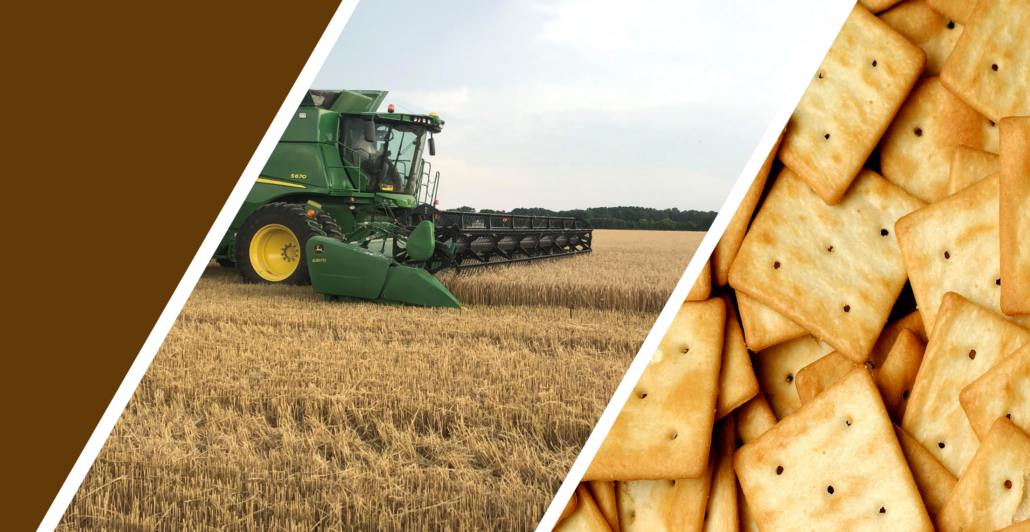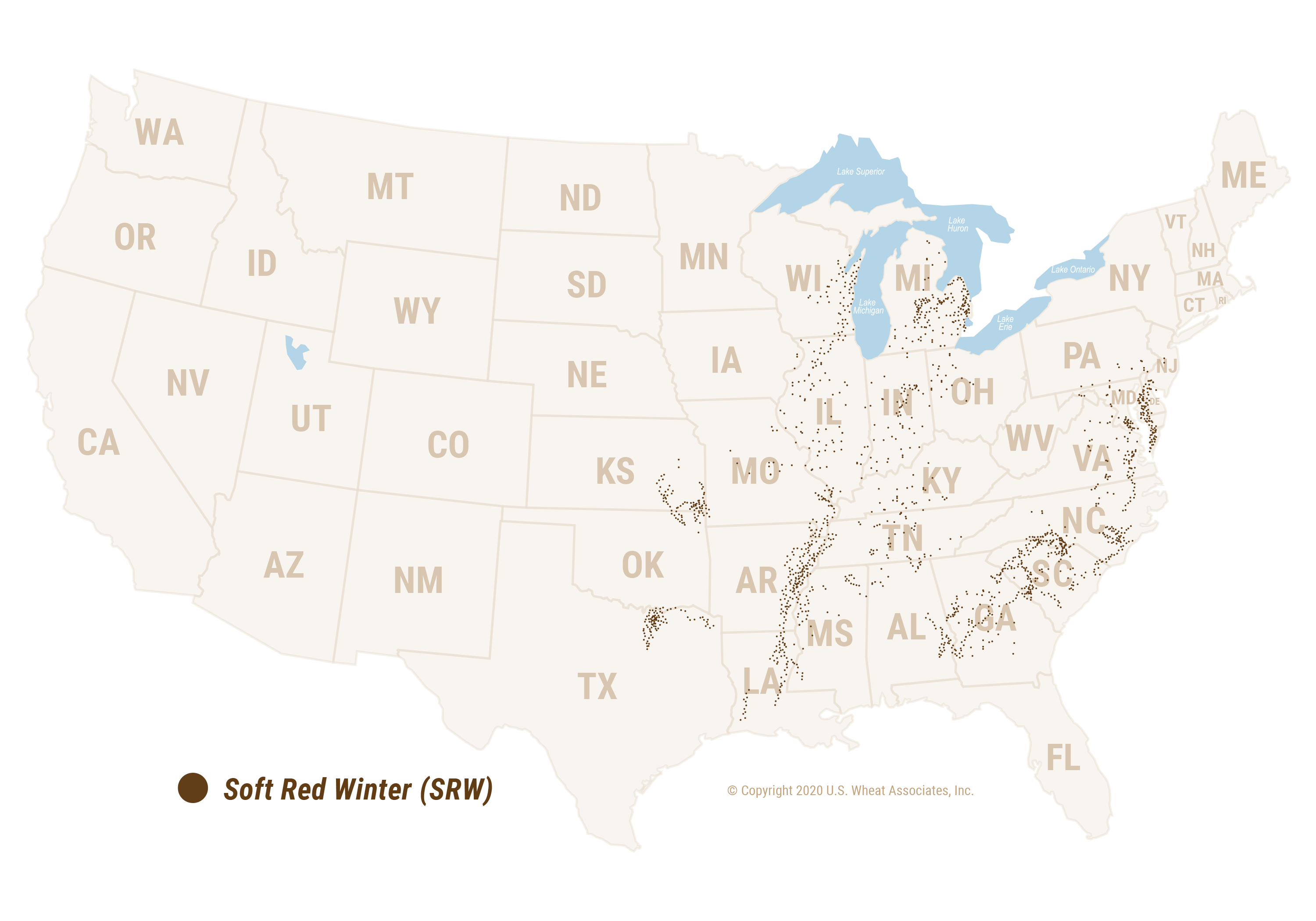U.S. soft red winter (SRW) wheat, commonly used for specialty products such as sponge cakes, cookies, crackers and other confectionary products, adds value to the miller and baker as a blending wheat. It is a high-yielding wheat with low protein of 8.5% to 10.5% (12% mb), soft endosperm, red bran, and weak gluten.
For the miller, SRW helps diversify the types of flour produced to improve the quality of many products. SRW blended with hard red spring (HRS) and hard red winter (HRW) wheat can lower grist cost and improve bread crumb texture or improve the quality and appearance of a wide variety of products.
For the baker, the lower moisture content of the flour produced with SRW creates an advantage by increasing the added water volume while optimizing water absorption and product quality to the consumer.
Please select your preferred language, report, and year, and click View Reports.
Where is U.S. Soft Red Winter grown?
Grown in the eastern third of the United States, SRW is the third largest class of wheat grown in the United States. It can be shipped via Gulf, Atlantic (East Coast), and Great Lakes ports.
U.S. Soft Red Winter Sample Collection and Analysis
Test weight, moisture, protein, 1000 kernel weight, wheat ash and falling number were determined on each sample, and DON on a portion of the samples. The remaining tests were determined on 18 composite samples. Results were weighted by estimated production for each reporting area and combined into Composite, East Coast and Gulf averages.
- Samples were collected, graded, milled and tested by Great Plains Analytical Laboratory.



